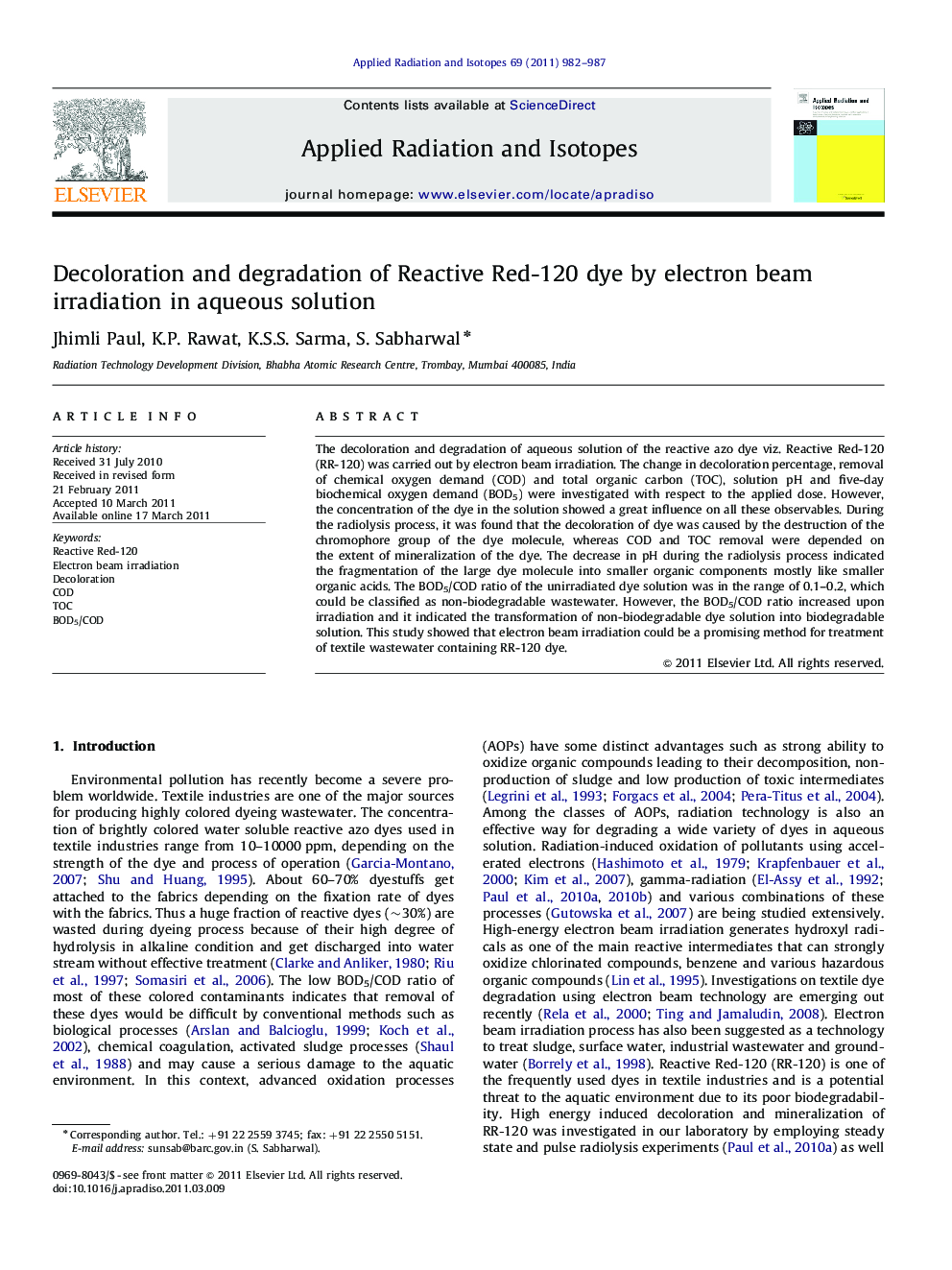| Article ID | Journal | Published Year | Pages | File Type |
|---|---|---|---|---|
| 1876504 | Applied Radiation and Isotopes | 2011 | 6 Pages |
The decoloration and degradation of aqueous solution of the reactive azo dye viz. Reactive Red-120 (RR-120) was carried out by electron beam irradiation. The change in decoloration percentage, removal of chemical oxygen demand (COD) and total organic carbon (TOC), solution pH and five-day biochemical oxygen demand (BOD5) were investigated with respect to the applied dose. However, the concentration of the dye in the solution showed a great influence on all these observables. During the radiolysis process, it was found that the decoloration of dye was caused by the destruction of the chromophore group of the dye molecule, whereas COD and TOC removal were depended on the extent of mineralization of the dye. The decrease in pH during the radiolysis process indicated the fragmentation of the large dye molecule into smaller organic components mostly like smaller organic acids. The BOD5/COD ratio of the unirradiated dye solution was in the range of 0.1–0.2, which could be classified as non-biodegradable wastewater. However, the BOD5/COD ratio increased upon irradiation and it indicated the transformation of non-biodegradable dye solution into biodegradable solution. This study showed that electron beam irradiation could be a promising method for treatment of textile wastewater containing RR-120 dye.
